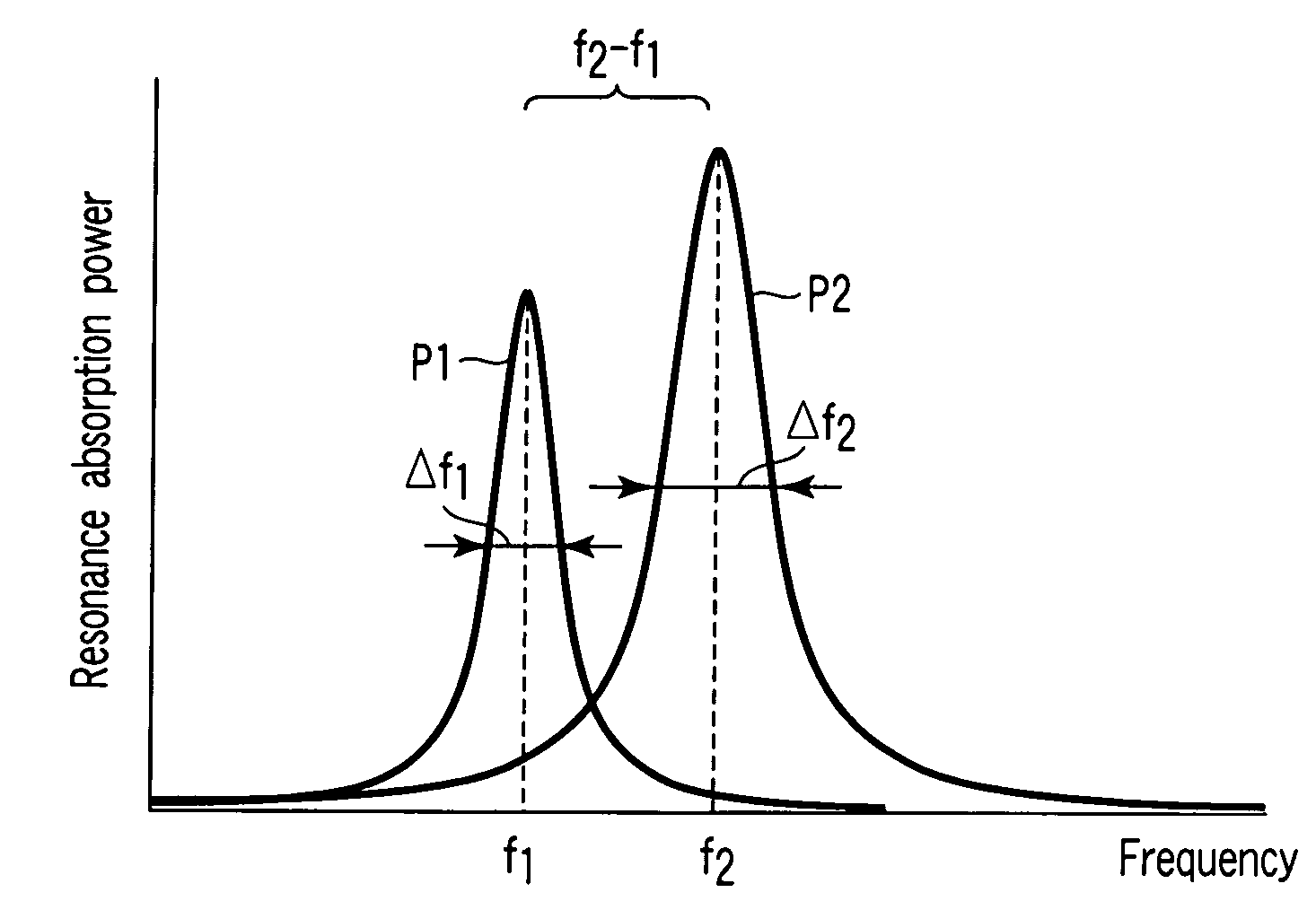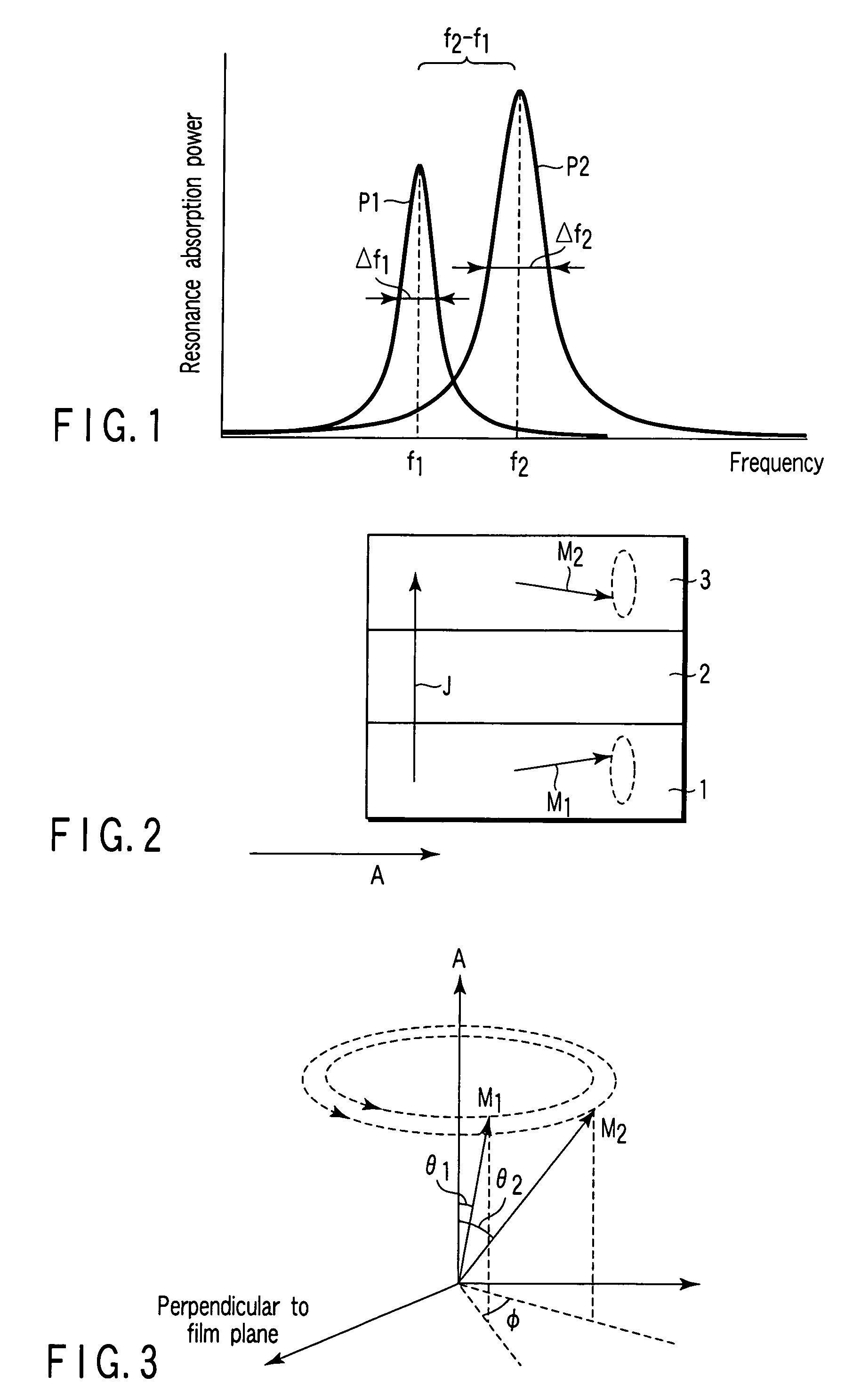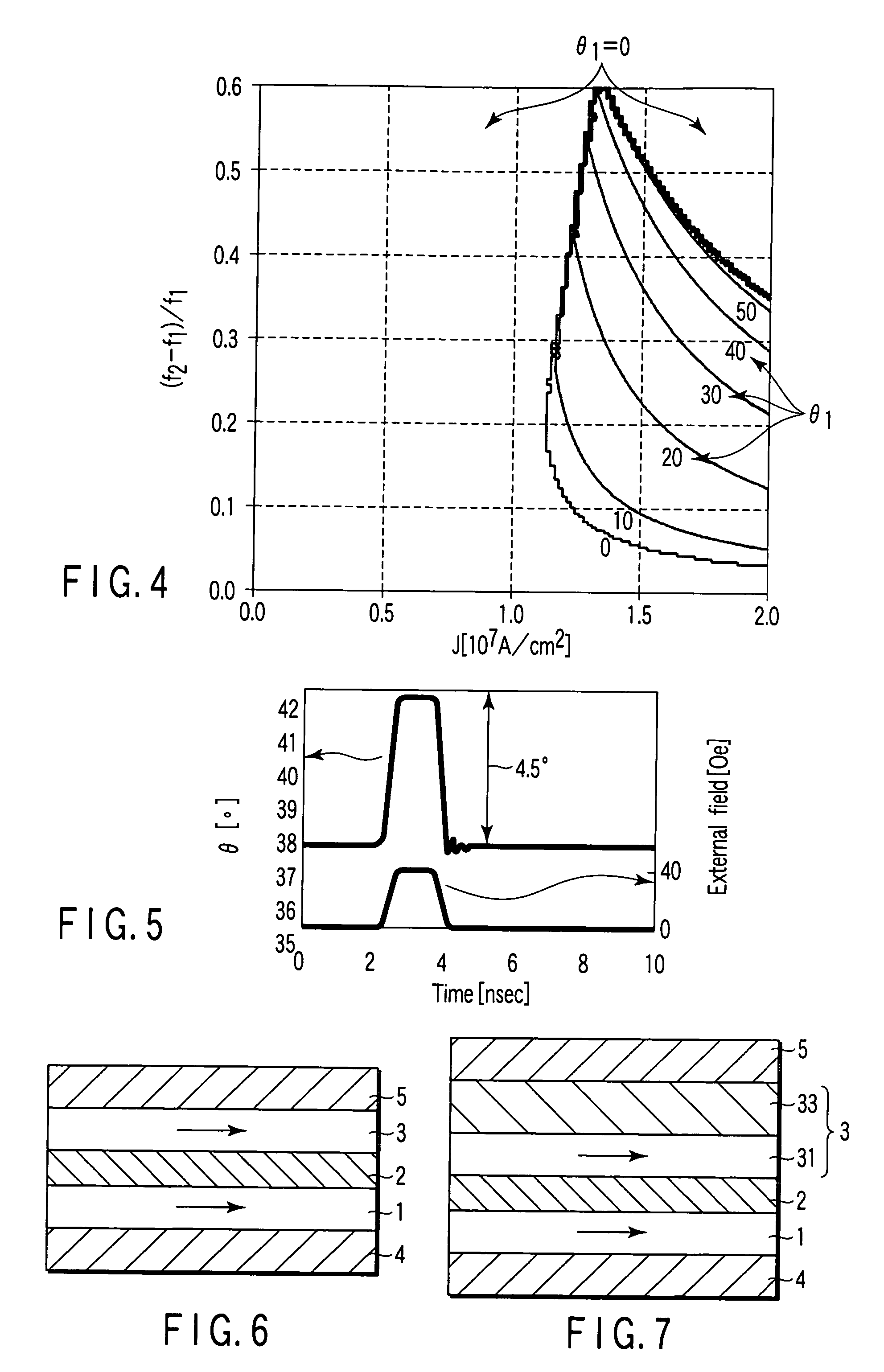Magnetic oscillating device based on spin transfer torque and magnetic sensor using the same
a technology of spin transfer torque and magnetic sensor, which is applied in the field of magnetic oscillating device, magnetic sensor, magnetic reproducing apparatus, etc., can solve the problems of low output, large amount of leakage flux, and size of recording bits
- Summary
- Abstract
- Description
- Claims
- Application Information
AI Technical Summary
Benefits of technology
Problems solved by technology
Method used
Image
Examples
example 1
[0117]The magnetic oscillating device in the present example has the structure shown in FIG. 6. Co is used for the first and second magnetic resonance layers 1 and 3. The magnitude of a uniaxial anisotropic field of a Co film is known to vary with the thickness thereof. Thus, Co layers with different film thicknesses are used for the first and second magnetic resonance layers 1 and 3 so as to differentiate the magnetic resonance frequency specific to the first and second magnetic resonance layers 1 and 3. The two Co layers are deposited so as to have magnetic anisotropies in the same direction. Cu is used for the nonmagnetic layer. The deposition is carried out by sputtering.
[0118]First, Cu [100 nm] and Ta [5 nm] are deposited as the lower electrode 4 on a silicon substrate having a thermal oxide film formed thereon. The surface of the lower electrode 4 is polished to improve flatness. On the lower electrode 4, a Co layer with a thickness of about 1.5 nm as the first magnetic resona...
example 2
[0120]The magnetic oscillating device in the present example has the structure shown in FIG. 7. The first magnetic resonance layer 1 is formed of a single ferromagnetic layer. The second magnetic resonance layer 3 is formed of an exchange-coupled film in which the ferromagnetic layer 31 and the antiferromagnetic layer 33 are stacked. The present example uses a manufacturing method similar to that in Example 1.
[0121]As shown in FIG. 7, a Cu film with a thickness of 10 nm as the lower electrode 4, a Co film with a thickness of 5 nm as the first magnetic resonance layer 1, a Cu film with a thickness of 3 nm as the nonmagnetic layer 2, a Co film with a thickness of 5 nm as the ferromagnetic layer 31 in the second magnetic resonance layer 3, an IrMn film with a thickness of about 8 nm as the antiferromagnetic layer 33 in the second magnetic resonance layer 3, and a Cu film with a thickness of 10 nm as the upper electrode 5 are used. The device has a junction area of about 100×100 nm2.
[01...
example 3
[0123]The magnetic oscillating device in the present example has a structure shown in FIG. 8. The first magnetic resonance layer 1 is formed of an exchange-coupled film in which the ferromagnetic layer 11 and the antiferromagnetic layer 13 are stacked. The second magnetic resonance layer 3 is formed of an exchange-coupled film in which the ferromagnetic layer 31 and the antiferromagnetic layer 33 are stacked. IrMn is used for the antiferromagnetic layers. Co is used for the ferromagnetic layers. The present example uses a manufacturing method similar to that in Example 1.
[0124]Specifically, a Cu layer [about 10 nm], an IrMn layer [about 10 nm], a Co layer [about 3 nm], a Cu layer [about 5 nm], a Co layer [about 3 nm], an IrMn layer [about 7 nm], and a Cu layer [about 20 nm] are stacked. The device has a junction area of about 50×100 nm2.
[0125]In a resonance spectrum through ferromagnetic resonance, peaks corresponding to the exchange-coupled film of the Co layer [about 3 nm] / IrMn la...
PUM
| Property | Measurement | Unit |
|---|---|---|
| thickness | aaaaa | aaaaa |
| intrinsic frequency | aaaaa | aaaaa |
| thickness | aaaaa | aaaaa |
Abstract
Description
Claims
Application Information
 Login to View More
Login to View More - R&D
- Intellectual Property
- Life Sciences
- Materials
- Tech Scout
- Unparalleled Data Quality
- Higher Quality Content
- 60% Fewer Hallucinations
Browse by: Latest US Patents, China's latest patents, Technical Efficacy Thesaurus, Application Domain, Technology Topic, Popular Technical Reports.
© 2025 PatSnap. All rights reserved.Legal|Privacy policy|Modern Slavery Act Transparency Statement|Sitemap|About US| Contact US: help@patsnap.com



